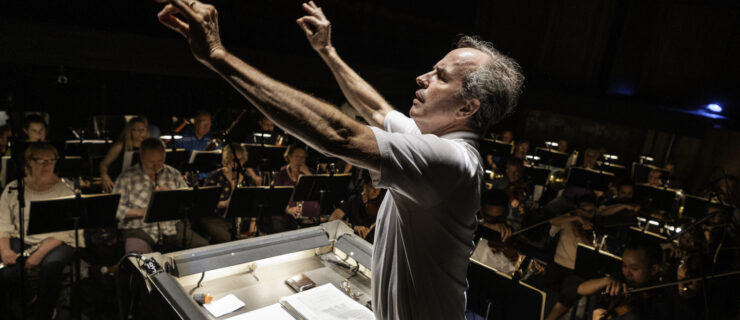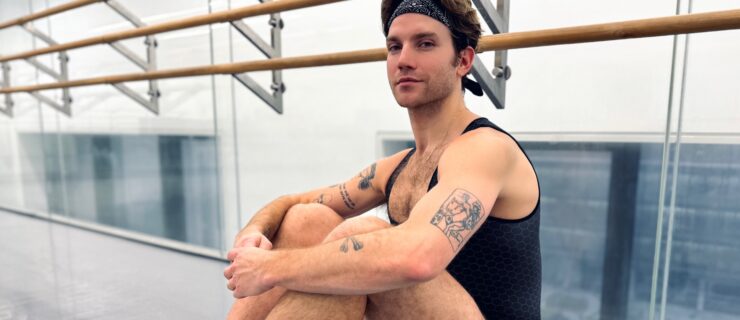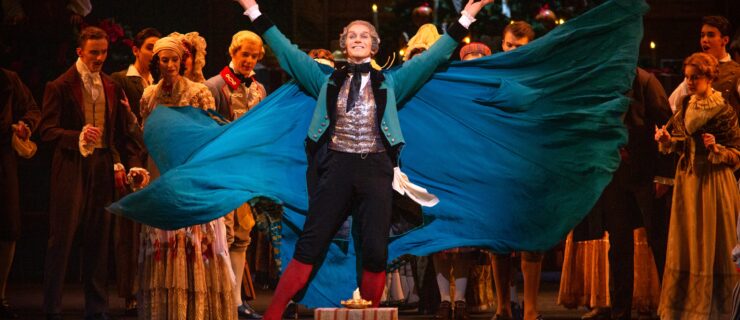Natalia Osipova Gets Candid About Her Latest Contemporary Program and Sergei Polunin
Natalia Osipova
, the Moscow-born principal of The Royal Ballet, has teamed up with London’s Sadler’s Wells Theatre to present Natalia Osipova & Artists, which will be making its U.S. premiere at New York City Center from November 10–12. (One piece on the program, Russell Maliphant’s Silent Echo, debuted August 27 in Los Angeles.) This surprising triple bill has given Osipova free rein to explore her contemporary side while working with some of the world’s most important choreographers (Arthur Pita, Sidi Larbi Cherkaoui and Maliphant) as well as her romantic partner, ballet dancer Sergei Polunin.
With the help of a translator, Pointe sat down with the 30-year-old Osipova and discussed ballet, contemporary dance and that moment and place where the personal and the professional meet.
What was the reason for creating a show featuring contemporary works rather than ballet?
I was always interested in contemporary dance—even in ballet school, I would follow it. Also, when one dances classical ballet all the time, you have to spice things up, so I choose to try different things. In a way, it’s all part of a creative search. I wouldn’t say I’m bored dancing classical pieces, I’d simply like to learn other languages of dance, as well.
How has the show been received?
As usual, there were good and bad reviews. I couldn’t really single out what specifically people objected to in the bad reviews, not because I don’t listen to critics—it’s a very hard profession and I’m used to critics of all kinds—but I don’t peruse every little detail and then try to reconcile it.
In Russell Maliphant’s Silent Echo. Photo by Bill Cooper, Courtesy Sadler’s Wells.
Each piece was created especially for you. At the Edinburgh International Festival, the audience was particularly impressed with Russell Maliphant’s
Silent Echo. How involved were you in its creation?
Normally, I don’t interfere, but I initially met with Russell and discussed it, and it was clear from the beginning that I would be dancing with Sergei. But the rest was left up to him. In this contemporary sphere, I trust the choreographer, whereas in a classical ballet, I might have discussions with the choreographer in order to introduce my own idiosyncrasies into pieces.
Is that because you’re new to contemporary dance and less comfortable with it?
Classical ballet is my native language, so there is room for me to deliver something of my own within it. With contemporary dance, I simply don’t feel like I am at the level where I can give input. I’m still learning that language.
How did you and Sergei Polunin meet?
We met about a year and a half ago while working on Giselle at La Scala in Milan. The partner who was scheduled to dance with me was ill, so I asked him to fill the role. There was something in the air about dancing with Sergei. My mother even mentioned that he might be an interesting dance partner. So in a way it was in the cards.
You must have heard he was being called the “bad boy of ballet” as rumors of him throwing fits and storming offstage surfaced. What did you expect working with him to be like?
I had certainly heard of Sergei’s reputation before working with him, but I understand well how things are very often exaggerated. So I didn’t pay much attention. In the end, I wasn’t going to dance with his reputation, I was going to dance with the real person.
In Pita’s Run Mary Run. Photo by Bill Cooper, Courtesy Sadler’s Wells.
What is he really like?
I met him after he gained that “bad boy” reputation, so I can only judge him as he is now. He certainly is quite outspoken. But the person that I work with and that I am together with is fairly levelheaded and very genuine. He is possibly a little more settled now. The situations that occurred previously happened for real reasons. He behaved as he did as a sincere creative person, there was no unnecessary theatricality.
It must be difficult to maintain a relationship when you work with different companies and are constantly touring. Was this production, at least in part, a way to spend more time together?
The show was already in motion at the time when we met, so it was not made specifically so that we could dance together, but it was a happy coincidence.
What are the best and worst parts of working with your significant other?
The most difficult part is that any outburst or critique during rehearsals is more open, so conflicts do arise. And as I am a young woman, it is easier for me to sometimes give way in these conflicts; and sometimes they carry on into our personal lives a little bit. The positives, however, are obvious. The feeling of being onstage together and dancing together and creating something together is incomparable.
For more news on all things ballet, don’t miss a single issue.





